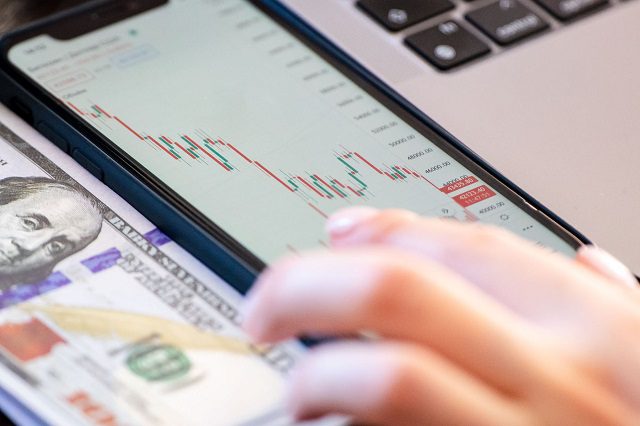Last updated Jul. 11, 2023 by Charles Zemub
VOO vs SPY: which S&P 500 ETF is best?
Investing in an S&P 500 ETF may be confusing, but it remains one of the best options when it comes to picking enduring and profit-yielding stocks over the long term.
When you decide to choose from any pair of ETFs, you will have to consider several factors. In this article, I will share with you the main differences between VOO and SPY.
What is the S&P 500 ETF?
The Vanguard S&P 500 ETF is a reputable index fund that tracks the stocks of the 500 most-performing companies across the United States.
Since the stocks of 500 companies are involved under this index fund, investors have more confidence in earning from their investment decision in the future.
Stocks under the S&P 500 ETF move in the same direction, making it possible for investors to monitor the growth of their investment and how to attain financial freedom with time. The ETF is weighted by the market cap of each company that made up the list.
This implies that companies with bigger holdings actually take more size of the fund. Specifically, the top 10 holdings occupy 30 percent of the index fund that make up the S&P 500 ETF.
As an investor, you must decide the type of S&P 500 to invest in while tracking the 500 holdings that comprise this index fund.
The most common two people often work with are VOO or SPY.
What is VOO?
Vanguard’s VOO exists as an exchange-traded fund (ETF) that monitors the S&P 500 index by owning several equities within the S&P 500. Investors can track stocks within the S&P 500 by investing in Vanguard’s VOO.
What is SPY?
The SPDR S&P 500 Trust (SPY) exists as an exchange-traded fund (ETF) that monitors Standard & Poor’s 500 (S&P 500) indexes. SPY is designed to generate returns in a similar format to the S&P 500 Index before making an expense.
The SPDR S&P 500 Trust trades on the NYSE Arca. The SPDR, which stands for the Standard & Poor’s Depositary Receipts, is the largest ETF in the world.
Good Read:17 of the best real estate and REIT ETFs
VOO vs SPY: Which S&P 500 ETF is best?

To determine the best index between VOO and SPY, you have to make a workable analysis to come up with the best option.
However, new investors may fail to understand the best investment option to consider. Whether you are a new investor or returning investor willing to increase your chances of earning more profits from your investment, you should choose the best S&P 500 ETF to invest in, often based on the following differences.
Popularity
When rating VOO and SPY based on popularity, keep in mind that the SPY is a more popular S&P 500 ETF than VOO. Due to its popularity, more investors prefer to work with this type of S&P 500 ETF.
Affordability
When it comes to affordability, the VOO is more considerate than the SPY. As of March 18th, 2022, VOO is $409.89, while SPY is $444.52. As of when the market closed for the day, VOO increased by 1.11% while SPY increased by 1.10%.
The values of these funds can always change from time to time. Hence, as an investor hoping to buy a lot of shares, you should consider buying VOO as it is a better option to consider.
Net Asset
As of the time of writing this article, the Net Asset of VOO is $808.8 billion, while the Net Asset of SPY is 4.55 billion. This amount has shown that more investors are considering VOO than SPY.
Hence, if you rate VOO vs. SPY simply based on their net asset, you may have to consider choosing the VOO over SPY.
Dividend Yield
As of March 18th, 2022, the dividend yield of VOO is estimated at 1.33%, while the dividend yield of SPY is estimated at 1.30%.
As an investor, you should keep in mind that dividend yield is helpful when it comes to analyzing the amount of income other investors have received from investing in a particular share price.
An ETF with a higher dividend yield is more attractive to new and returning investors. Hence, when it comes to selecting between VOO and SPY based on their dividend yields, you may consider going for Vanguard as it surpasses SPY by 0.03%.
Expense Ratio

As an investor, you must closely analyze the cost of holding an ETF for a given period. Learning about the expense ratio of VOO and SPY will enable you to arrive at a probably better investment decision. The expense ratio of VOO is 0.03%.
This implies that you will pay 0.03% of your total investment fund under VOO. For example, if you own a share of $100, the expense ratio will cost you 3 cents.
On the other hand, the expense ratio of SPY is 0.09% implying that it will cost you 0.09% of your total investment fund under the SPY. For example, if you own a share of $100, the expense ratio will cost you 9 cents, which is 6 cents more than that of VOO.
Years of Operation
VOO was created on September 7th, 2010, while SPY was created on January 27th, 1993. This implies that the VOO has been in operation for over 12 years while the SPY is over 29 years old.
The difference in creation dates between these ETFs has much to say about their price histories.
Volume
As of March 18th, 2022, the volume of VOO is estimated at 5,562,489, while the volume of SPY is estimated at 106,345,544. Comparing these ETFs based on their volumes, you will realize that SPY has a higher volume.
But why does the SPY have a greater volume?
The common reason why SPY has a greater volume is because of its popularity. Despite the volume of VOO lagging behind SPY, they are both considered healthy volume choices for investment. Their volumes have proven that millions of shares are traded every day on both ETFs.
Average Volume

The average volume of VOO as of March 18th, 2022, is 8,663,808, while the average volume of SPY is 113,622,385. Comparing both ETFs based on their average volume, you will realize that SPY is still greater in value.
But most investors will still prefer to go for VOO as they will hold it longer. Since the VOO has a better expense ratio, you may prefer working with it and earning more money with time.
Conclusion
When you intend to invest in an index fund, it’s important to seek professional advice on choosing whether to go for VOO or SPY. Nevertheless, both of them are great picks for long-term investment considerations.





